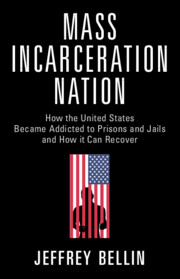 Mass Incarceration Nation
Mass Incarceration Nation Published online by Cambridge University Press: 03 November 2022
The way that prisons fill can be depicted with an analogy. Imagine a road that leads to prison, the “prison road.” The police divert people who are traveling on other roads onto the prison road. Between this police-controlled entry ramp and prison are a variety of off-ramps. The first off-ramp is controlled by prosecutors who can decline to prosecute, diverting people off the prison road. Another off-ramp is operated by grand juries who can decline to indict or trial juries who can vote to acquit. A large off-ramp is operated by judges who can dismiss cases or impose noncustodial sentences. On the other side of prison are additional ramps operated by parole boards, who can shrink the prison population by ordering early release (or expand it via parole revocations), and governors who can do the same through clemency. This whole enterprise – the road, the prison, and the on- and off-ramps – is designed and funded by legislators.
To save this book to your Kindle, first ensure [email protected] is added to your Approved Personal Document E-mail List under your Personal Document Settings on the Manage Your Content and Devices page of your Amazon account. Then enter the ‘name’ part of your Kindle email address below. Find out more about saving to your Kindle.
Note you can select to save to either the @free.kindle.com or @kindle.com variations. ‘@free.kindle.com’ emails are free but can only be saved to your device when it is connected to wi-fi. ‘@kindle.com’ emails can be delivered even when you are not connected to wi-fi, but note that service fees apply.
Find out more about the Kindle Personal Document Service.
To save content items to your account, please confirm that you agree to abide by our usage policies. If this is the first time you use this feature, you will be asked to authorise Cambridge Core to connect with your account. Find out more about saving content to Dropbox.
To save content items to your account, please confirm that you agree to abide by our usage policies. If this is the first time you use this feature, you will be asked to authorise Cambridge Core to connect with your account. Find out more about saving content to Google Drive.